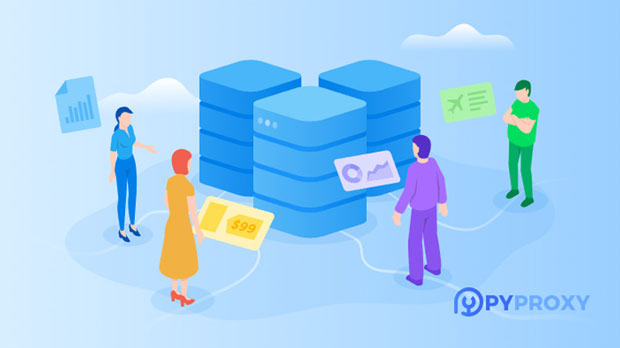In today's digital age, social media management has become a crucial aspect for businesses and individuals alike. With various tools available to optimize and streamline the process, it's essential to determine which ones are effective and reliable. One such tool is PYPROXY's free website unblocker online. This tool claims to help users access blocked websites and bypass restrictions. However, when it comes to managing social media accounts, especially for professional use, it's important to assess whether such a tool is truly beneficial or potentially harmful. In this article, we will explore the pros and cons of using this tool in social media management, focusing on its functionality, risks, and how it can either enhance or hinder your workflow. Understanding the Role of Website Unblockers in Social Media ManagementBefore diving into the specific features of Pyproxy's unblocker tool, it's important to understand why website unblockers are often used in the context of social media management. Social media managers are frequently faced with restrictions when accessing certain platforms or content. These restrictions may arise due to geographical limitations, censorship, or network filters. Website unblockers, like Pyproxy’s, are often seen as a quick solution to bypass these issues.However, the effectiveness of a website unblocker depends on various factors, including the nature of the restriction, the platform's security measures, and the user’s ability to navigate the tool. Social media managers need tools that not only offer access but also improve their workflow efficiency, security, and analytics capabilities.Pyproxy’s Free Website Unblocker: Features and LimitationsTo understand whether Pyproxy’s free website unblocker is suitable for social media management, it’s essential to examine its key features and limitations.Key Features of Pyproxy's Free Website Unblocker1. Access to Blocked Websites Pyproxy’s unblocker is designed to help users access websites that may be blocked in certain regions or networks. This can be useful if you're trying to view or interact with content from platforms that are restricted in your country or organization.2. No Installation Required Being an online tool, Pyproxy doesn’t require any installation, which makes it easy to use without the need for complex setups. This could be appealing to social media managers who are looking for a quick, on-the-go solution.3. Free to Use The tool offers its services for free, which makes it an attractive option for businesses or individual social media managers looking for cost-effective solutions.Limitations of Pyproxy’s Free Website Unblocker1. Security Risks One of the primary concerns with using an online unblocker is security. These tools can expose users to various risks, including data breaches or exposure to malware. This is a significant issue for social media managers who handle sensitive client information or business data.2. Performance and Reliability Free website unblockers often experience slower speeds, limited functionality, or occasional downtimes. Social media management requires tools that are reliable and efficient, especially when dealing with time-sensitive tasks such as posting updates or responding to customer inquiries.3. Privacy Issues Using an unblocker tool means routing your internet traffic through third-party servers. This raises concerns about privacy, as your browsing data might be logged or monitored. For social media managers who need to protect sensitive business data, this is a major concern.4. Limited Features for Social Media Management While Pyproxy’s unblocker may allow access to blocked websites, it does not offer the comprehensive features needed for social media management. Tools like scheduling, analytics, content creation, and team collaboration are essential for effective social media management but are not supported by this unblocker.Security and Privacy Concerns: The Impact on Social Media ManagementAs a social media manager, the security of your accounts and data is paramount. When you use an online website unblocker, you are essentially handing over your browsing information to a third-party server. These servers might collect data related to your online activity, including your IP address, geographical location, and browsing habits.This can present significant risks, particularly if you are managing multiple client accounts or business accounts. Cybersecurity threats such as phishing, hacking, and malware attacks are ever-present, and using a tool that compromises your data privacy can lead to significant consequences, including account hijacking or data leaks.Moreover, using a free tool may not provide the level of encryption or protection needed to safeguard sensitive information. Social media managers dealing with brands or businesses that require confidentiality cannot afford to take such risks.Performance and Efficiency: The Effect on WorkflowsIn the fast-paced world of social media management, time is money. Efficiency is crucial, and any delays in accessing necessary content or platforms can disrupt the entire workflow. Free website unblockers, including Pyproxy, may offer slow or unreliable connections, especially if the service is used by many people at once. For a social media manager, these delays can interfere with critical tasks such as posting content at the right time, engaging with followers, or tracking social media metrics.Furthermore, social media management requires a range of tools for content creation, post scheduling, and analytics. Pyproxy’s unblocker is limited in this regard, as it does not provide these essential features. Relying on an unblocker for primary functions may not be sustainable in the long run.Why You Should Consider Other Tools for Social Media ManagementWhile Pyproxy’s unblocker may serve as a temporary solution for bypassing geographical restrictions, it falls short when it comes to the full suite of features required for effective social media management. Instead, social media managers should explore other tools that are designed specifically for their needs. Here are some key features to look for in a social media management tool:1. Comprehensive Platform Access A good social media management tool should allow access to multiple platforms such as Facebook, Instagram, Twitter, LinkedIn, and others. It should also provide the ability to schedule posts, engage with followers, and track performance.2. Security Features Ensuring that the tool offers encryption and secure browsing is essential for protecting your accounts and business data.3. Analytics and Reporting Social media managers need tools that provide in-depth analytics and insights into performance, audience behavior, and engagement rates.4. Collaboration Capabilities For teams managing social media accounts, having a tool that allows collaboration, approval workflows, and task assignments is crucial for efficiency and effectiveness.Conclusion: Is Pyproxy’s Free Website Unblocker Right for Social Media Management?While Pyproxy’s free website unblocker offers an easy and cost-effective solution for accessing blocked websites, it is not suitable for professional social media management. The tool has significant limitations in terms of security, performance, and the lack of features essential for effective social media management. For businesses and professionals seeking a comprehensive, secure, and efficient tool, it’s recommended to invest in a more specialized social media management platform that offers the necessary functionality to streamline workflows, enhance productivity, and ensure data security.By considering these factors, social media managers can make informed decisions about the tools they choose, ensuring they meet both their operational needs and security requirements.
Oct 15, 2025


































































